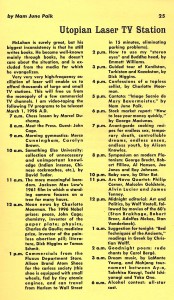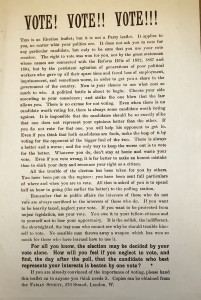 Found— a copy of Manifestos, the eighth Great Bear Pamphlet published by The Something Else Press of New York in 1966.
Found— a copy of Manifestos, the eighth Great Bear Pamphlet published by The Something Else Press of New York in 1966.
The Something Else Press was an avant gardeAmerican publisher of writers associated with Fluxus, an international, interdisciplinary community of artists, designers, composers and poets inspired by the composer John Cage. Many, including Yoko Ono, whose Grapefruit ( see Bookride blog ) had appeared in 1964, were dedicated to Performance Art and ‘Happenings’. The double pamphlet Manifesto, described as a ‘call to arms ‘, was edited by Dick Higgins (1938 – 98), a leading figure in the movement. It contained material by many of the authors of the nine other pamphlets in the Great Bear list—including Alison Knowles ( Higgins’ wife), Al Hansen, Jerome Rothenberg, Allan Kaprow and Wolf Vostell.
All those who wrote for Manifestoswere significant in their own way, but a few were more pioneering than others. Nam June Paik was one. Born in Korea Paik was a Buddhist whose Zen-like vision permeated much of his work, which included pioneering experiments in video art. He was also interested in the possibilities of cybernetics. By 1966 he could declare in Manifestosthat ‘As the Happening is the fusion of various arts, so cybernetics is the exploitation of boundary regions and across various existing sciences’. He went on to declare that he is ‘video-taping the following TV programmes to be telecast March 1, 1996 A.D.’ The speculative programmes on this ‘ Utopian Laser TV Station ‘ feature many of his fellow Manifestos contributors, but also such influential figures as John Cage and Dadaist Marcel Duchamp. Most of the programmes described by Paik recall real Performance Art (‘Confessions of a topless cellist by Charlotte Moorman’; others may be satirical (‘ Baby care by Diter Rot’). One programme for 11a.m., ‘ Jackson Mac Low’s 1961 film in which a standing camera focuses on a tree for many hours, looks forward to Warhol’s five hour long Sleep. Paik went on to explore variations on video art, most notably with ‘TV Buddha’, a video installation depicting a Buddha statue viewing its own live image on a closed TV circuit. Continue reading


